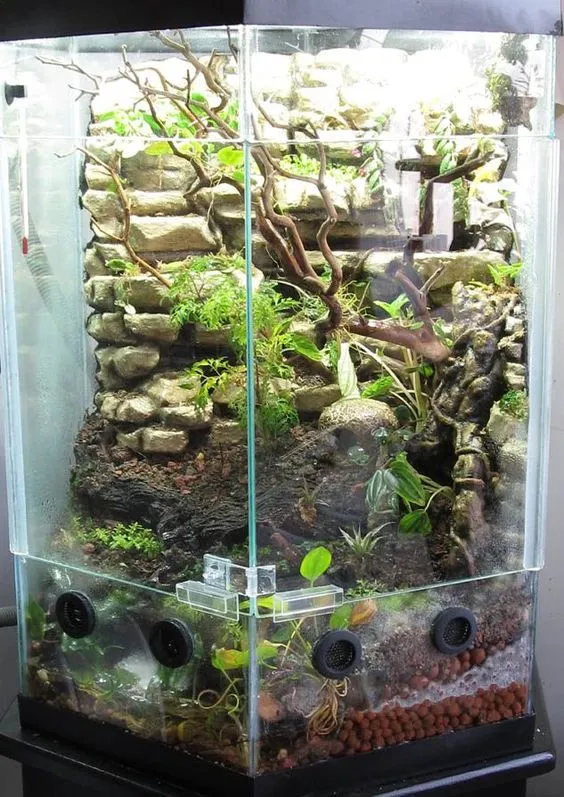Choosing the Right Tarantula Habitat
Setting up a tarantula habitat might seem daunting, but with the right information, it’s a rewarding experience. Creating the perfect environment is crucial for your tarantula’s health and happiness. This guide will walk you through every step, from choosing the enclosure to maintaining the ideal conditions. Understanding the specific needs of your tarantula species is the first crucial step. Different species come from various habitats, and their requirements will differ based on whether they are terrestrial, arboreal, or fossorial. Proper planning ensures you create a space where your spider can thrive. The objective is to provide a secure, comfortable, and enriching environment.
Size Matters
The size of the tarantula enclosure is one of the most critical aspects of its habitat. An enclosure that’s too small will restrict movement and prevent your tarantula from behaving naturally, while an enclosure that’s too large can make it difficult for the tarantula to find food and feel secure. For terrestrial tarantulas, the general rule is to provide an enclosure that is at least two to three times the tarantula’s leg span in width. The height doesn’t need to be excessive, but it should be enough to accommodate the substrate depth and any decorations you add. Arboreal tarantulas, on the other hand, require taller enclosures with adequate climbing space. A good height allows them to move freely and establish a comfortable web. As your tarantula grows, you’ll need to upgrade its enclosure accordingly. Regularly reassess the size of the enclosure to ensure it still meets your tarantula’s needs. Proper size directly impacts the tarantula’s well-being.
Material Choices
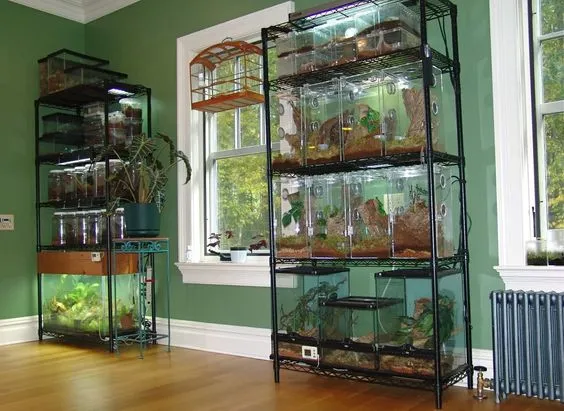
The material of your tarantula’s enclosure is another important consideration. Glass or clear plastic enclosures are the most common choices because they offer excellent visibility, allowing you to observe your tarantula easily. Glass is durable and scratch-resistant, making it a long-lasting option. Plastic enclosures are generally lighter and can be less expensive. However, ensure the plastic is sturdy and not prone to warping or damage. Avoid enclosures made of materials that can trap heat or don’t allow for sufficient ventilation. Consider the lid as well. It should be secure to prevent escapes and allow for airflow. A mesh or screened lid is a good choice, as it provides ventilation while keeping your tarantula safely inside. Proper ventilation is crucial for preventing the buildup of humidity and the growth of mold and bacteria.
Ventilation is Key
Good ventilation is absolutely essential for a healthy tarantula habitat. Adequate airflow helps to regulate humidity levels, prevent the growth of mold and mildew, and ensure your tarantula’s respiratory health. The enclosure should have ventilation holes or a screened lid. These openings allow for air circulation while also preventing the tarantula from escaping. The number and placement of ventilation holes are essential. Too few holes can lead to stagnant air and humidity buildup, while too many can dry out the habitat excessively. The balance is species-specific. For humid environments, ventilation can be adjusted to maintain the right conditions, providing a healthy ecosystem.
Setting Up the Substrate
The substrate is the foundation of your tarantula’s habitat, providing a surface for them to walk on, burrow in, and generally feel comfortable. Choosing the right substrate and setting it up correctly is crucial for your tarantula’s well-being. It also impacts humidity levels and helps maintain the overall cleanliness of the enclosure. There are several substrate options to consider, each with different properties and suitability for various tarantula species. Before introducing the substrate, ensure the enclosure is clean and prepared. Add the substrate to the required depth, which depends on the type of tarantula you have. This depth is for burrowing species, and you should create a comfortable environment that resembles their natural habitat.
Types of Substrate
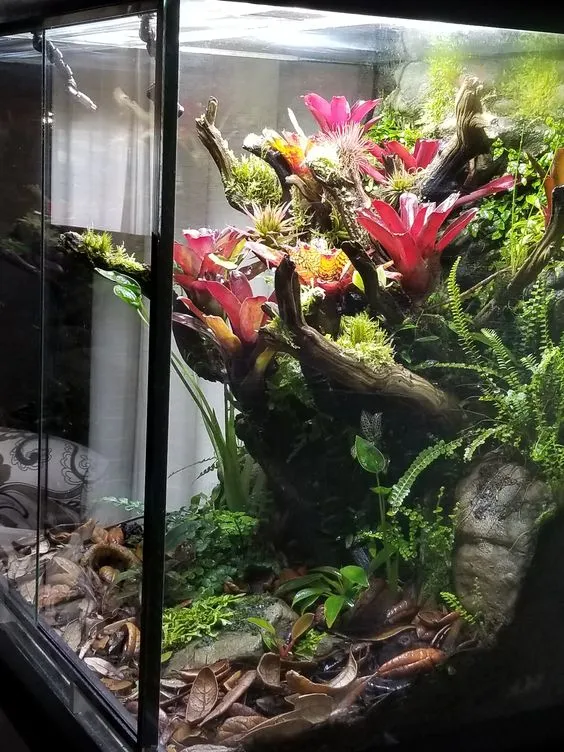
Several substrate types are suitable for tarantula habitats, and the best choice depends on the specific needs of your tarantula species. Common options include coconut fiber (coco coir), peat moss, and vermiculite. Coco coir is a popular choice, as it holds moisture well, is readily available, and is generally safe for tarantulas. Peat moss also retains moisture and offers a slightly acidic environment, which can be beneficial. Vermiculite is another option, often mixed with other substrates to enhance moisture retention. Avoid substrates that are too dusty or contain chemicals or additives that could harm your tarantula. Research the preferred substrate for your specific tarantula species to ensure you’re providing the optimal environment. The chosen substrate affects humidity, burrowing behavior, and overall health.
Substrate Depth
The depth of the substrate is determined by the type of tarantula you have. Terrestrial species typically require a substrate depth of at least 2-4 inches, while fossorial species (burrowing tarantulas) need significantly more, often 6-8 inches or more. This depth allows them to burrow and create their own tunnels, which are essential for their natural behavior and sense of security. Arboreal tarantulas don’t need as much substrate, as they spend most of their time above ground. Ensure that the substrate is evenly distributed throughout the enclosure, and pack it lightly to allow for easy burrowing if needed. Monitor the substrate depth regularly, especially after cleaning the habitat. It should always provide the appropriate space for your tarantula’s specific needs, mimicking their natural environment and providing comfort.
Maintaining Humidity
Humidity is a crucial factor in tarantula care, especially for tropical species. The appropriate humidity levels vary depending on the species, so research your tarantula’s specific needs. To maintain humidity, you can mist the substrate with water, especially in drier climates. Use a spray bottle to lightly mist the enclosure once or twice a week. Be careful not to over mist, as this can lead to excessive humidity and mold growth. Another way to manage humidity is to provide a water dish, which contributes to moisture in the enclosure. The substrate type also affects humidity levels. Coco coir and peat moss are great at retaining moisture, while other substrates might require more frequent misting. Keep a hygrometer in the enclosure to monitor humidity levels, ensuring the environment is appropriate for your tarantula’s requirements. Maintaining the right humidity balance will ensure your tarantula’s health and well-being.
Essential Habitat Features
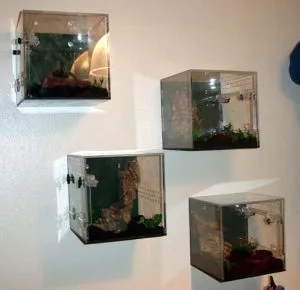
Besides the enclosure and substrate, several other elements are necessary for creating a thriving tarantula habitat. These features provide enrichment, security, and comfort, mimicking the tarantula’s natural environment. Water, hiding places, and appropriate temperature regulation are all critical to your spider’s well-being. Providing these essential features ensures your tarantula can exhibit its natural behaviors. Also, they can feel secure and comfortable in its habitat. Creating an environment that meets the tarantula’s needs is the main goal.
Water Dish and Fresh Water
A shallow water dish is an essential part of any tarantula habitat, providing a constant source of fresh water. The water should be clean and readily available, allowing the tarantula to drink as needed. The dish should be shallow enough to prevent accidental drowning, especially for smaller spiderlings. It’s essential to clean and refill the water dish regularly. Water should be changed at least every few days to prevent the growth of bacteria and mold. You can use a small, stable dish, such as a bottle cap or a commercially available reptile water dish. The water level should be carefully maintained to ensure the tarantula can access it without risk. Providing fresh water is essential for the tarantula’s health.
Hides and Enrichment
Tarantulas are often shy and sensitive creatures, so providing hiding places is crucial for their well-being. Hides help them feel secure and reduce stress. You can use various materials to create hides, such as cork bark, half logs, or commercially available reptile hides. Place the hide in a shaded area of the enclosure to provide a safe retreat for your tarantula. Enrichment is also essential for a healthy habitat. This can include adding plants (live or artificial), branches, or other decorations. These elements provide visual stimulation and allow the tarantula to exhibit natural behaviors, such as climbing or web-spinning. Ensure any decorations are safe and non-toxic. Providing appropriate hides and enrichment is essential for the tarantula’s psychological well-being.
Temperature Regulation

Temperature regulation is essential for a healthy tarantula habitat, as tarantulas are ectothermic, meaning they rely on external sources of heat to regulate their body temperature. The ideal temperature range varies depending on the species, but generally, most tarantulas thrive between 70-85°F (21-29°C). Avoid placing the enclosure in direct sunlight, as this can overheat the habitat. You can use a heat mat or a ceramic heat emitter to provide supplemental heat if necessary. Place the heat source on the side or back of the enclosure to avoid overheating the substrate. Regularly monitor the temperature using a thermometer. Ensure the temperature remains consistent, as significant fluctuations can stress your tarantula. The right temperature supports the tarantula’s metabolism, digestion, and overall health.
Feeding and Cleaning Your Tarantula Habitat
Proper feeding and regular cleaning are vital for maintaining a healthy and hygienic environment for your tarantula. These practices support the spider’s health and prevent the buildup of waste and potential diseases. A well-maintained habitat is essential for the tarantula’s long-term well-being. Following these guidelines will help create a thriving environment where your tarantula can flourish. Feeding the tarantula and cleaning their environment go hand in hand to maintain your tarantula’s health.
Feeding Schedule and Prey
The feeding schedule for a tarantula depends on its age and species. Spiderlings require more frequent feeding than adults. Generally, spiderlings should be fed two to three times a week, while adult tarantulas can be fed once or twice a week. Feed your tarantula appropriately sized prey. The prey should be small enough to be easily caught and consumed, but large enough to provide adequate nutrition. Common prey items include crickets, mealworms, and roaches. Avoid feeding prey that are too large, as they can stress your tarantula. Remove uneaten prey within 24 hours to prevent them from stressing or harming your tarantula. Proper feeding, with a balanced diet and consistent schedule, is essential for a healthy tarantula.
Cleaning and Maintenance
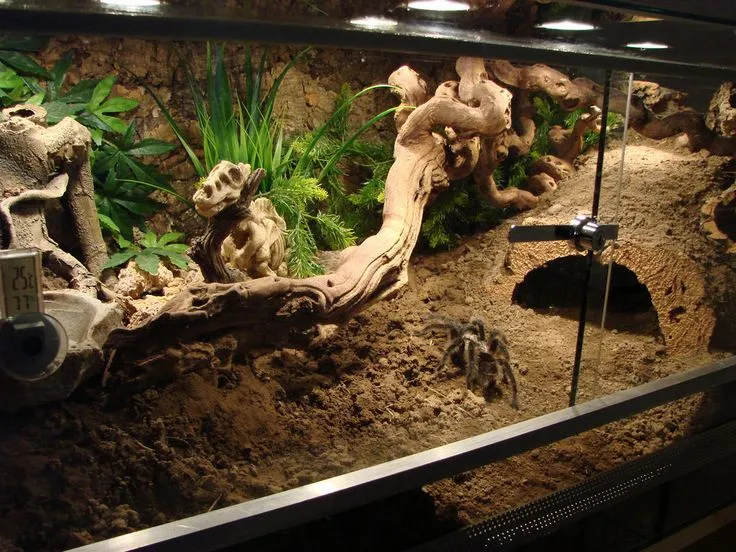
Regular cleaning is essential for maintaining a healthy tarantula habitat. Spot clean the enclosure weekly, removing any uneaten prey, molted exoskeletons, and waste. Complete substrate changes are usually necessary every few months or as needed, depending on the substrate type and the size of the tarantula. When cleaning the enclosure, remove the tarantula safely and temporarily house it in a separate container. Then, remove the substrate and wash the enclosure with warm water and mild soap. Rinse thoroughly and allow the enclosure to dry completely before returning the clean substrate and the tarantula. Regularly inspect the enclosure for signs of mold or pests. Maintaining a clean habitat will prevent illness and promote a thriving environment for your tarantula.
Dealing with Common Issues
Even with the best care, you may encounter some common issues when keeping a tarantula. Understanding and addressing these problems promptly will ensure the continued health and well-being of your tarantula. Issues can range from minor inconveniences to more serious problems that require immediate attention. Being aware of these potential issues and how to manage them is critical for responsible tarantula ownership.
Mites and Pests
Mites and other pests can sometimes infest tarantula habitats, posing a threat to your spider’s health. Mites are tiny arachnids that can feed on the tarantula or its substrate. Inspect the enclosure regularly for any signs of pests. Signs of mites include small, moving dots on the tarantula or in the substrate. If you detect mites, isolate the tarantula and completely clean the enclosure. Replace the substrate and thoroughly clean any decorations. You can also introduce beneficial mites that feed on the harmful ones. Prevent pest infestations by purchasing clean substrate, quarantining new tarantulas, and regularly cleaning the enclosure. Prompt action is essential if you detect pests, ensuring the well-being of your tarantula.
Molding Substrate
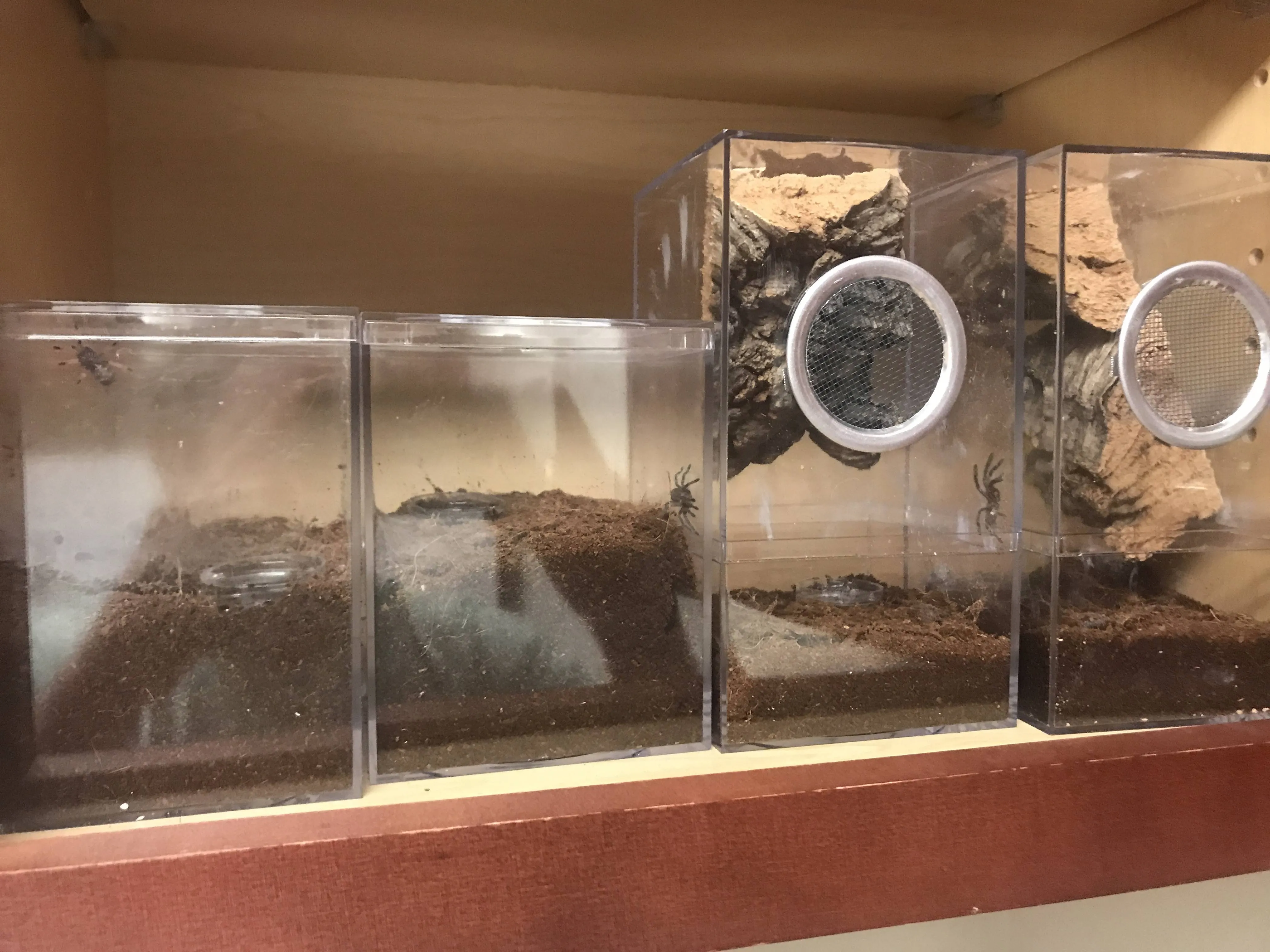
Mold growth is another common issue in tarantula habitats, particularly in environments with high humidity or poor ventilation. Mold can be harmful to tarantulas, causing respiratory problems and other health issues. Prevent mold growth by ensuring proper ventilation, avoiding over-misting, and regularly cleaning the enclosure. If you notice mold in the substrate, remove the affected area immediately. Replace the substrate and adjust your humidity control methods. If the mold persists or spreads, consider a complete enclosure cleaning, including disinfecting any decorations. Monitoring humidity levels and maintaining good ventilation are critical in preventing and managing mold growth. Preventing and quickly addressing mold issues will protect your tarantula’s health.
Conclusion
Creating and maintaining a healthy tarantula habitat involves understanding their needs and providing the right environment. From choosing the appropriate enclosure and substrate to maintaining proper humidity and temperature, every detail contributes to your tarantula’s well-being. By following this beginner’s guide, you can ensure that your tarantula thrives in a comfortable and secure habitat. Remember to always research the specific requirements of your tarantula species and adjust your care accordingly. With dedication and knowledge, you can enjoy the rewarding experience of keeping these fascinating creatures. A properly maintained tarantula habitat is not just a cage it’s a thriving ecosystem where your spider can flourish.
